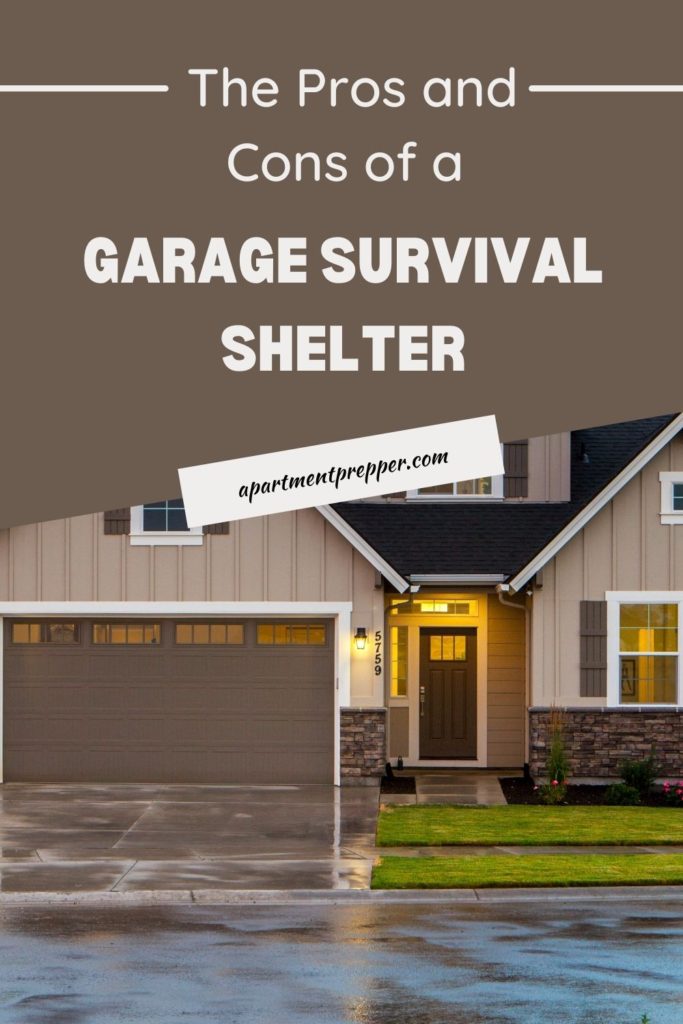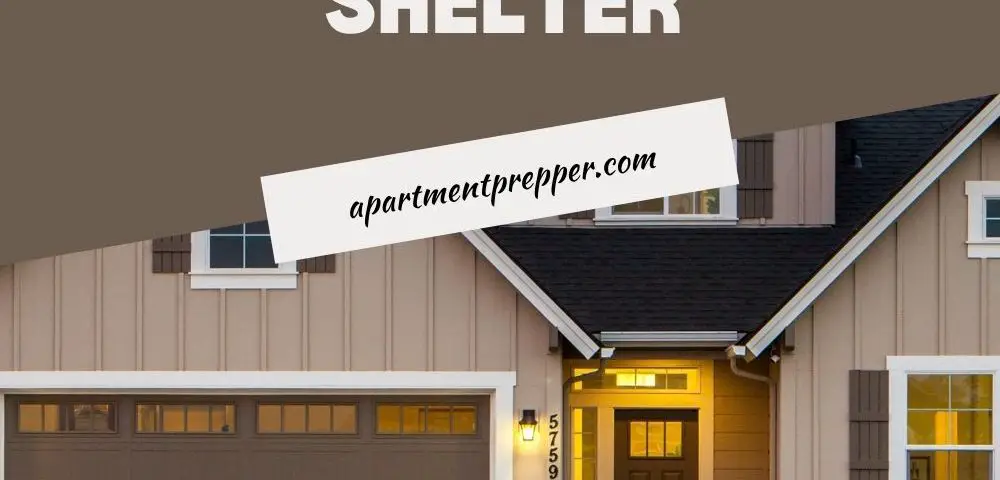Written by Martin Banks
Being a prepper, as the name suggests, is about being prepared to survive an emergency, regardless of the details of the scenario. If your home already has an attached garage, it might seem like the next logical step would be to turn that garage into a survival shelter. Is that the best option? What are the pros and cons of building a garage survival shelter?
Why Choose the Garage?
If you’ve got an entire house to work with, why should you worry about turning your garage into a survival shelter?
Discretion
The fastest way to make yourself a target in a survival situation is to brag that you have a shelter or supplies squirreled away for the end of the world. You have the option to turn your entire home into a survival shelter, but it will require extra effort to be discreet about it if you invite friends or family over. Instead of trying to hide an entire house in plain sight, turning your garage into a shelter makes it easier to be discreet.
Cost-Effectiveness
One of the biggest challenges with a survival shelter is reinforcing it against storms or attacks. You can do this with the entire house, but the cost might be astronomical. Focusing on a single room ensures that you have somewhere to hole up if things go pear-shaped without having to empty the bank reinforcing the entire house.
Comfort
If your garage isn’t already attached to the home’s HVAC system, it’s a simple task to connect the space to the ductwork for ventilation, heating and cooling. If you’re stuck inside for a while, comfort is essential.
The garage isn’t always the perfect solution. Let’s take a look at the pros and cons of using your garage as a survival shelter.
Pro: Ease of Access
Traditional survival shelters are underground. This has its own share of pros and cons. Accessing them generally means climbing down a ladder or a set of stairs.
For people who might have mobility problems or use walkers or wheelchairs, getting down into a shelter like that can be difficult or even dangerous. Having a shelter at ground level in your garage means it’s much easier to access for people of all ability levels.
Con: Losing Parking Space
Building a shelter in your garage is a great idea if you’re never planning to park your car there. Even an underground shelter with a garage entrance will often mean you can’t park there without potentially blocking the entrance.
If you don’t mind parking in the driveway or aren’t worried about protecting your car from the elements, this might not be a con. But for anyone who prefers to park indoors, it can be a major deal-breaker.
Pro: Extra Maintenance
Keeping your garage door operational is a key part of using the space as your survival shelter. That means a bit of extra work and extra maintenance, but this is a pro rather than a con.
Start by having the door inspected by a professional. If it’s been in operation for a while, consider replacing the torsion springs and other moving parts that have probably seen a lot of wear and tear over the years. Regular maintenance can go a long way toward keeping you safe in an emergency and keeping your garage functional for everyday use.
Con: Harder to Escape
Building a survival shelter in your garage means you don’t have to worry about dodging hailstones – or bullets – as you dash for your shelter. It also means that if the emergency you’re hiding from is a tornado, it could make it more difficult to escape.
If a tornado comes through and drops a house on your shelter, it could be a lot harder to escape. Of course, nothing stops said tornado from dropping a house on your backyard shelter, but building in the garage increases the chances that the house that traps you will be your own.
Pro: Less Chance of Flooding
Survival shelters are often sold to survive severe weather, but if there is a lot of rain in the forecast, building an underground shelter isn’t always the best option. A waterproof shelter sounds great until your exit is under a few feet of water and your air vents are blocked or dumping water into your shelter.
A lot of water could even bring your underground shelter to the surface! Building above the ground doesn’t make you flood-proof, especially if you live in an area that’s prone to flooding, but it does reduce the chances of finding yourself trapped underwater.
Con: Harder to Climate Control
The garage might be attached to your house, but it’s probably not connected to the home’s HVAC system unless you made a specific request during construction. That means no climate control and usually no insulation, making the space harder to climate control.
This isn’t an issue if you can open the door and keep a fan or space heater running, but if the power is out and you need to keep the door closed, it’s going to get uncomfortable in that shelter pretty fast.
Pro: Fewer Bugs and Pests
Digging a hole in the backyard to install a storm or survival shelter can keep you safe from a tornado, but you might be sharing your space with bugs, worms, and other creepy-crawlies that live in the ground.
Finishing the walls can reduce the number of bugs that make their way into your shelter, but if you’re working with unfinished walls and floors, you’re never going to keep them all out. Building a shelter in your garage makes it easier to keep the pests out, so you don’t have to worry about sitting on a scorpion while you’re also worried about whatever is trying to kill you outside.
Con: It Might Not Withstand Storms
If you plan to use your garage as a storm shelter, you might need some additional renovations to bring it up to code. According to FEMA (the Federal Emergency Management Agency), you need a shelter that’s built to the ICC-500 code and built from impact-resistant materials.
If you don’t live in the tornado belt, this isn’t as big of an issue – but if storms are on your list of emergencies you need to prepare for, be ready for a bigger renovation than you might have planned on.
Building Your Perfect Survival Shelter
Being a prepper means being ready for anything. Having a solid shelter is one essential part of that task. If you’re planning to build a survival shelter, make sure you understand all the pros and cons of your chosen location.
About the author
Martin Banks is the managing editor at Modded. Follow him on Twitter @TModded for frequent updates on his work.
If you found this article interesting or helpful, please consider helping us out (without costing you anything)! We are an affiliate of Amazon.com, which means we received a small commission if you click through one of our Amazon links when you shop, at totally no cost to you. This helps keep the lights on at the blog. Thanks!



2 comments